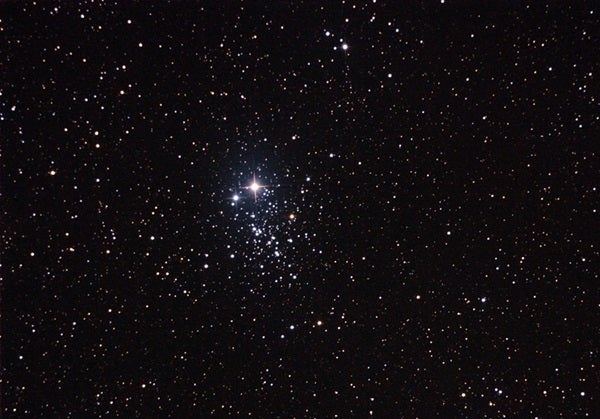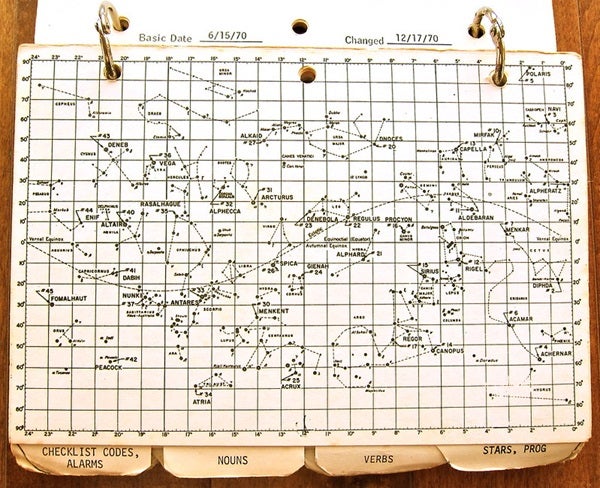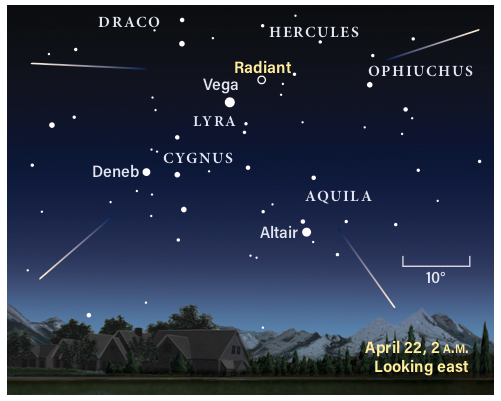Tonight, try searching out star clusters in Cassiopeia the Queen. This circumpolar constellation is visible all night from much of the U.S. In more southerly states, you can catch the Queen early in the evening as she sets, then again early in the morning before dawn as she rises once more. Seek out the open cluster M103 just 1° east of Delta (δ) Cassiopeiae. This 6′-wide cluster is visible in binoculars; a 4-inch telescope will resolve its brightest stars, while larger apertures reveal more of its scattered components.
From M103, hop a little less than 2° east to NGC 663, another open cluster. This object is much more densely packed than M103, with about 400 stars in a region 0.25° across. Some observers might be able to detect this cluster with the naked eye under excellent conditions, but binoculars or a telescope from any decent observing location should unveil its sparkling beauty.
From NGC 663, backtrack to M103, then swing 3° southwest to reach NGC 457. This uniquely shaped open cluster is called the Owl Cluster or the E.T. Cluster because it resembles an owl with outstretched wings (or the titular alien from Steven Spielberg’s 1982 film, with his arms spread wide). Two bright stars are the figure’s eyes, while the rest of the cluster’s luminaries spread out to form the body to the northwest.
Saturday, April 11
Tomorrow, April 12, marks the 59th anniversary of humanity’s first foray into space: the launch of Yuri Gagarin aboard Vostok 1 on April 12, 1961. Today, the anniversary is celebrated worldwide under the title of Yuri’s Night or the World Space Party. Due to the ongoing coronavirus pandemic, in 2020 the celebration is moving online. You can find more information about the global webcast, which begins tonight (April 11) at 7 P.M. EDT, at https://party.yurisnight.net/globalwebcast.
Now waning after its “super” appearance last week, an 86-percent-illuminated Moon still makes a great target for both beginner and advanced observers in honor of the space race’s ultimate goal. Rising in the southeast just after 11 P.M. local time and remaining visible all night, the Moon spends tonight balanced atop the claws of Scorpius the Scorpion. You can find our satellite nearly 7° north of Antares, the scorpion’s bright red heart.
Sunday, April 12
Asteroid 4 Vesta comes within 40′ of Epsilon (ε) Tauri tonight. At magnitude 8.4, Vesta is within reach of most binoculars, offering casual observers the chance to spot this main-belt asteroid. Potato-shaped Vesta measures about 300 miles (483 kilometers) across, making it the third-largest object in the main belt.
Scan 4° east of Epsilon to find NGC 1647, an open star cluster containing a few dozen stars between 8th and 11th magnitude. Drop about 3° southeast of Epsilon, and you’ll spot brilliant Aldebaran, Taurus’ brightest star. This famous giant is actually a low-level variable star, fluctuating in brightness by about 0.2 magnitude at irregular intervals.
On this day in 1970, while en route to the Moon, the crew of Apollo 13 radioed Mission Control in Houston to report a problem. One of the service module’s oxygen tanks had exploded, affecting the crew’s supply of breathable oxygen and crippling the spacecraft with the resulting electrical failure.
The Apollo spacecraft carried not only the most sophisticated computer at the time, but also an ancient astronomical tool: the sextant. Using stars from a list of 37 well-known luminaries programmed into the computer, astronauts could independently determine their position in case of a navigation failure. The problem for Apollo 13? Debris from the explosion made it impossible to pick out the real stars among the glittering pieces blown off the spacecraft. The crew ultimately used the Sun to align the spacecraft and determine their position, much to their relief (and that of controllers on the ground).
Among that list of 37 stars intended for navigational use is Procyon. Labeled No. 16 in Apollo’s navigational star list, this magnitude 0.4 star is one of only two that make up the constellation Canis Minor the Little Dog. You can find the star in the western sky at sunset, slowly making its way toward the horizon and setting after 1 A.M. local time. To Procyon’s east you’ll find Apollo star No. 22, Regulus; to its south you’ll find star No. 15, Sirius.
The Moon passes 1.2° south of Pluto at 6 P.M. EDT today. Shortly after, Last Quarter Moon occurs at 6:56 P.M. EDT.
In the two hours or so before dawn, look southeast to see the Moon and Jupiter nearly side by side in the sky. Earth’s half-illuminated satellite sits just 7° southwest of magnitude –2.2 Jupiter. Look the same distance southeast of the giant planet and you’ll see magnitude 0.6 Saturn as well. Mars still sits nearby, glowing at magnitude 0.6 nearly 9° east of the ringed planet.
The Moon passes 2° south of Jupiter at 7 P.M. EDT tonight, although the pair is below the horizon at the time and won’t rise again until the early morning of the 15th.
The Lyrid meteor shower also begins tonight. Lyrid meteors are best observed between midnight and dawn, as the radiant climbs higher in the eastern sky. The shower kicks off with its radiant located in Hercules; the radiant then travels about 1° per day, eventually reaching Lyra. Observers at a dark site can expect between 15 and 20 meteors per hour, especially as the days progress and the shower approaches its peak. Find a dark site and focus on an area away from Lyra and about 45° high to search out meteors.
The Lyrids will continue into next week, peaking under a New Moon in the predawn hours of April 22.
Wednesday, April 15
Break out your telescope this morning to watch Ganymede’s shadow traverse Jupiter’s northern cloud tops. You’ll find the event already underway as the giant planet rises; the shadow drops off the planet’s northwestern limb to end the show at 5:52 A.M. EDT. Ganymede itself sits to Jupiter’s east and draws closer to the planet as the hours progress.
Nearby, the waning Moon passes 2° south of Saturn at 5 A.M. EDT.
Thursday, April 16
The Moon continues its journey past the morning’s most visible trio of planets, passing 2° south of Mars at 1 A.M. EDT. The pair rises a little less than three hours later; Mars stands about 18° high an hour before sunrise, with the Moon now almost 4° to its southeast. Both lie nestled inside the constellation Capricornus.
Friday, April 17
The planet Venus — well on its way to greatest brilliancy in just 10 days — passes 10° north of Aldebaran at 4 P.M. EDT. By an hour after sunset, the magnitude –4.7 planet shines brightly near the red-gold eye of Taurus the Bull. Venus appears just 36 percent illuminated, but also spans about 32″ in the sky. In the coming days, its crescent will continue to slim down, even as the planet grows in apparent size. By April 30, Venus will be just 25 percent illuminated and span 39″.

Our exclusive Sky Guide 2020 is now available! This free downloadable pamphlet contains a month-by-month rundown of 2020’s biggest celestial events, from Mars’ best opposition in years to the return of totality in South America this December. Check out Astronomy’s Sky Guide 2020 now!












